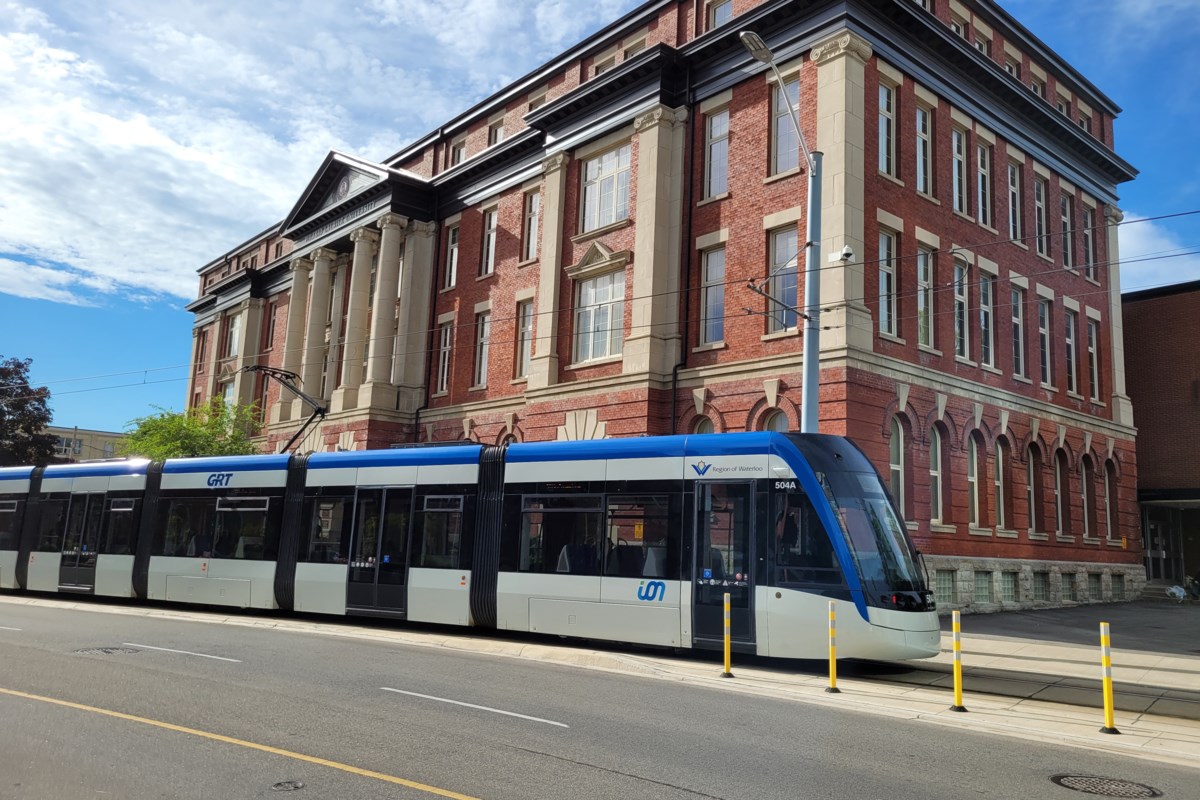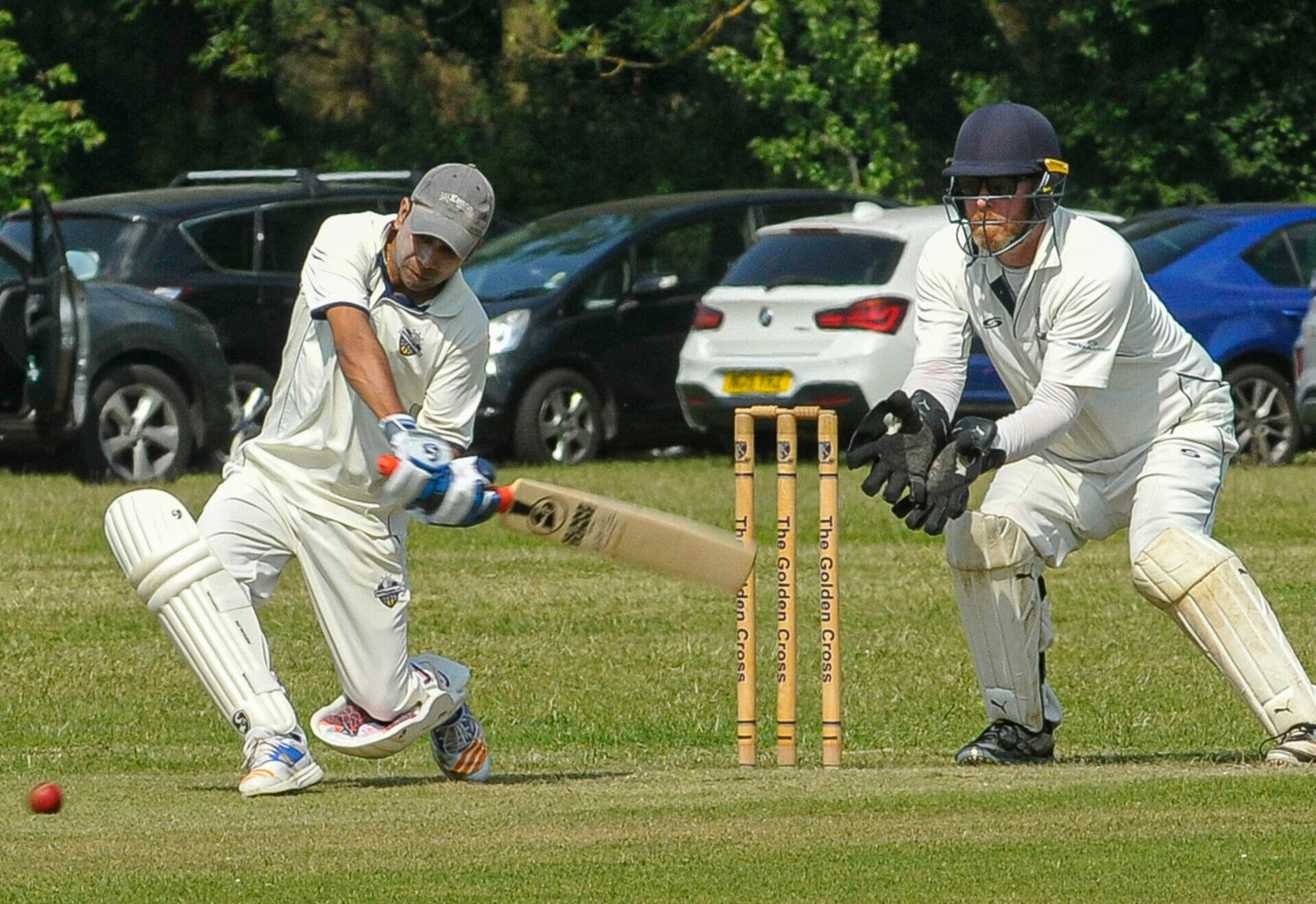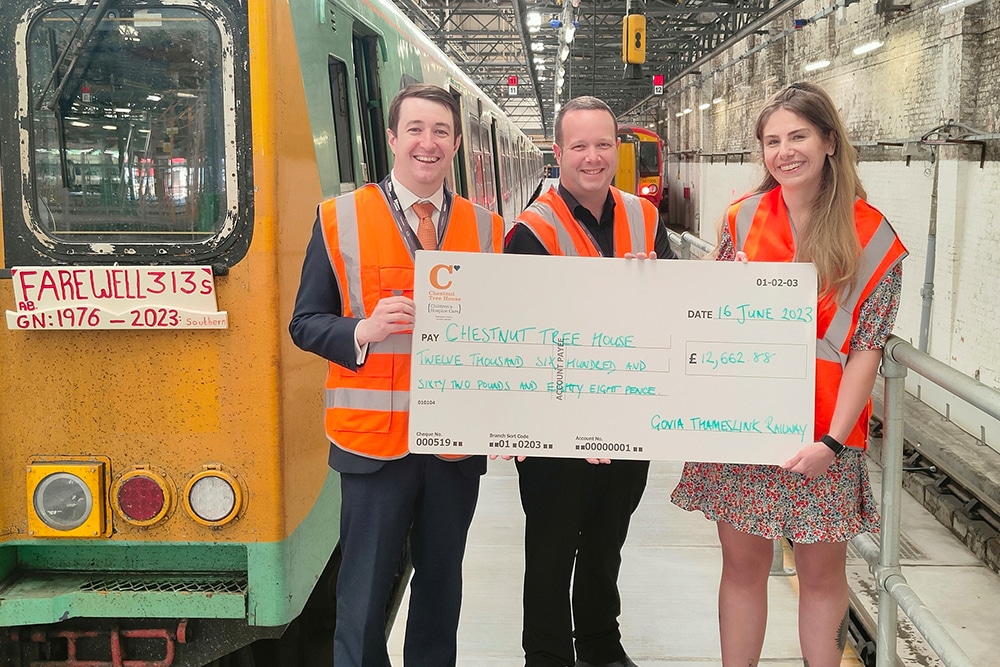Despite recent projections that pegged the final cost of Stage 2 of ION light rail transit at $4.46 billion, there’s still optimism among at least one Waterloo region staff member and one regional councillor that the project will proceed “Onward to Cambridge.”
The latest cost estimates, which were provided in an update to the region’s planning and works committee last month, include all the soft and hard costs to build, plan and design the route, acquire properties and purchase vehicles.
Matthew O’Neil, manager of rapid transit coordination with the region, presented the figures to regional council. Just two year’s prior in 2021, the total cost was estimated at $1.36 billion.
That was when the province signed off on the Transit Project Assessment (TPA), without conditions, giving the region the green light to move ahead with its plan to build the extension that will add 18 kilometres to the ION light rail transit system through Cambridge.
O’Neil was there during the June 2021 announcement for the TPA in which then Cambridge mayor Kathryn McGarry excitedly announced to the feds and the province, “We’re coming for you; we’re coming for that funding. Onward to Cambridge.”
Less than two years later and that excitement wasn’t anywhere to be seen around the regional horseshoe when O’Neil provided the updated cost estimate in April.
The inflated price caught many by surprise, but O’Neil says everything that’s being built now is coming at an added expense.
“There’s a couple factors with the cost,” O’Neill said.
“Before the pandemic, the projected inflation and cost escalation was trending based on historical index. The pandemic changed that. Costs have increased since we did previous cost estimates, pre-pandemic numbers heavily referencing Stage 1.”
The other major factor is the route the LRT will travel, which features significant grading issues.
“Stage 1, our system that operates now, is almost entirely at grade so it runs along streets in existing rail corridors or roadway corridors,” O’Neil said.
“From Fairway Station it needs to go up and over Fairway Road and CP rail. There’s a bridge there. It also has to cross the Grand River. The grade of Shantz Hill is too steep for the operation of the trains and longevity of the engines. There’s a grade separation on Eagle Street with CP and they’re not compatible. It all contributes to cost.”
The challenging route means there will need to be more full buyouts of properties, which because of the huge spike in real estate prices across the region are also costing more than properties purchased during Stage 1.
O’Neil will be present at an upcoming Special Planning and Works Committee on May 24 to field questions from council.
While the cost is understandably daunting, O’Neil says he wouldn’t lose hope and he remains optimistic about the future of the project.
“I don’t think we can say it’s unrealistic,” he said.
“Other comparable projects have received funding both provincially and federally. We’re growing quickly and will see a lot of growth.”
Regional councillor Pam Wolf admits she was surprised by the cost, but isn’t ready to give up on the project just yet.
“For the federal and provincial governments to meet climate action, they’ll need to fund new kinds of public transit,” Wolf said in reference to the LRT.
“Too often we cut back because of finances. We cut back from what we wanted and in the end it’s not a savings. I think we need to bite the bullet. We need better public transit and we need people on public transit.”
Another system that has been floated in the past has been the idea of bus rapid transit (BRT). The BRT is a high capacity bus system that typically occupies its own lane.
It’s an idea that Wolf thinks the region should explore.
“I don’t think we should put all of our eggs in one basket,” she said.
“I’m of the mind that thinks the BRT is something we should do first. While were waiting for the LRT, we need something that attracts people to public transit.”
O’Neil says it’s important to understand that in order to have a gold standard BRT, buses need their own lanes which is significantly different than the way the system is set up now.
Currently there has been no direct mandate to pursue the BRT idea.
“We don’t have a mandate to pursue buses but it’s council’s prerogative to have us do so if they wish,” he said.
“It would be feasible but whether its preferred I don’t know. The LRT is significantly more expensive but it’s more likely to achieve the project goal with greater benefits.”
Wolf says she’s looking forward to the information session and will have questions aimed at ensuring the residents of Cambridge are well represented with any plans.
“I’m asking what’s the purpose? To meet the needs of the people of Cambridge who have been paying for the LRT through provincial and federal taxes? Or is it to meet the needs of people in Kitchener-Waterloo?” she said.
“Is it possible to do a form of BRT before the LRT or do we have to do the business case and hopefully get the funding, then do this whole process and in the meantime don’t have anything other than regular buses? We need a form of rapid transit.”














